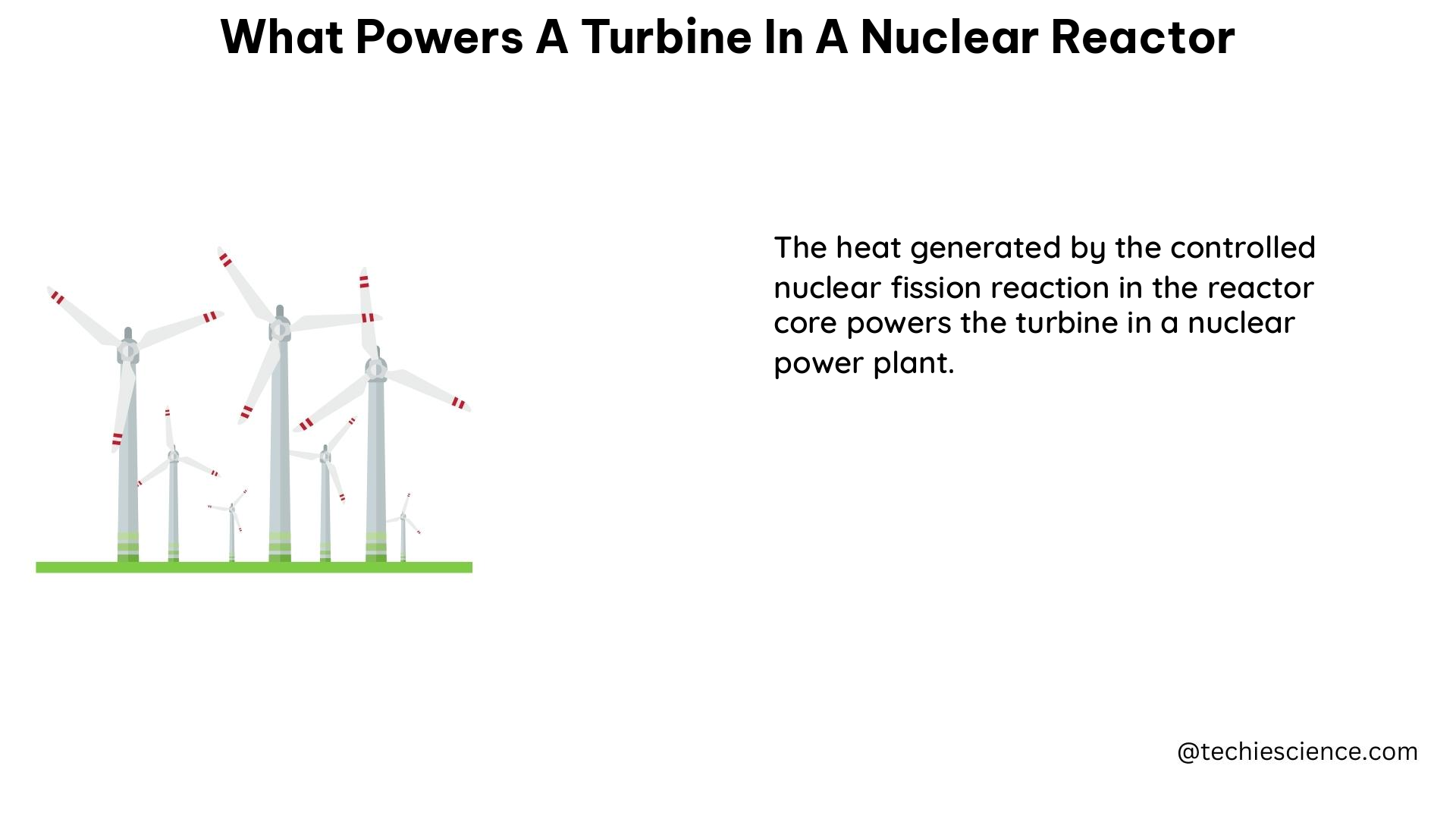In a nuclear reactor, the turbine is powered by the high-pressure steam generated through the heat produced from nuclear fission. This steam is created when the water in the reactor’s core is heated to extremely high temperatures, causing it to turn into steam. This steam is then used to drive the turbine, which in turn generates electricity.
Understanding the Nuclear Reactor’s Thermal Power Output
- A typical nuclear reactor has a thermal power output of around 3,000 Megawatts (MWt), which is the heat generated by the nuclear reactions taking place within the reactor core.
- This thermal energy is then converted into mechanical energy in the turbine. The efficiency of this conversion can vary, but a typical light water reactor has a thermal efficiency of around 33-37%.
- This means that a typical light water reactor can generate around 1,000-1,100 Megawatts of gross electrical power (MWe) from the thermal energy produced.
The Conversion of Thermal Energy to Electrical Power

- After accounting for the electricity needed to run the reactor and the rest of the plant, the net electrical power available to be sent out to the grid is around 900-1,000 MWe.
- This conversion of thermal energy to electrical power is achieved through a series of complex processes and components within the nuclear reactor.
Key Components of a Nuclear Reactor
-
Reactor Core: The reactor core contains the fuel rods, control rods, and a moderator (usually water). This is where the nuclear fission reactions take place, generating the heat that is used to produce steam.
-
Pressure Vessel: The reactor is housed in a pressure vessel to maintain the high pressure of the water, which is essential for the steam generation process.
-
Steam Generator: The steam generated in the reactor core is then used to power a steam turbine, which is connected to an electric generator.
-
Turbine: The high-pressure steam from the steam generator is directed to the turbine, where it expands and drives the turbine blades, converting the thermal energy into mechanical energy.
-
Electric Generator: The turbine is connected to an electric generator, which converts the mechanical energy into electrical energy that can be transmitted to the grid.
Factors Affecting Turbine Power Output
-
Reactor Thermal Power: The higher the thermal power output of the reactor, the more steam can be generated to drive the turbine.
-
Thermal Efficiency: The thermal efficiency of the reactor, typically around 33-37%, determines how much of the thermal energy can be converted into mechanical energy in the turbine.
-
Steam Pressure and Temperature: The higher the pressure and temperature of the steam, the more energy it can impart to the turbine blades, increasing the mechanical power output.
-
Turbine Design: The design and engineering of the turbine itself, including the number of stages, blade design, and materials used, can significantly impact the turbine’s efficiency and power output.
-
Reactor Type: Different reactor designs, such as pressurized water reactors (PWRs) and boiling water reactors (BWRs), can have varying thermal efficiencies and turbine configurations, affecting the overall power output.
Conclusion
In summary, the turbine in a nuclear reactor is powered by the high-pressure steam generated from the heat produced by nuclear fission. This steam drives the turbine blades, converting the thermal energy into mechanical energy, which is then used to generate electricity through a connected electric generator. Understanding the key components, thermal power output, and factors affecting the turbine’s power generation is crucial for optimizing the efficiency and performance of nuclear power plants.
References:
- How much electricity does a power plant generate? – EIA. https://www.eia.gov/tools/faqs/faq.php?id=104&t=3
- Nuclear Power Reactors. https://world-nuclear.org/information-library/nuclear-fuel-cycle/nuclear-power-reactors.aspx
- NUCLEAR 101: How Does a Nuclear Reactor Work? https://www.energy.gov/ne/articles/nuclear-101-how-does-nuclear-reactor-work

The lambdageeks.com Core SME Team is a group of experienced subject matter experts from diverse scientific and technical fields including Physics, Chemistry, Technology,Electronics & Electrical Engineering, Automotive, Mechanical Engineering. Our team collaborates to create high-quality, well-researched articles on a wide range of science and technology topics for the lambdageeks.com website.
All Our Senior SME are having more than 7 Years of experience in the respective fields . They are either Working Industry Professionals or assocaited With different Universities. Refer Our Authors Page to get to know About our Core SMEs.